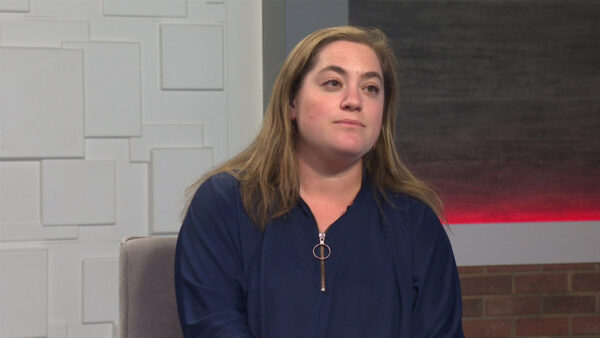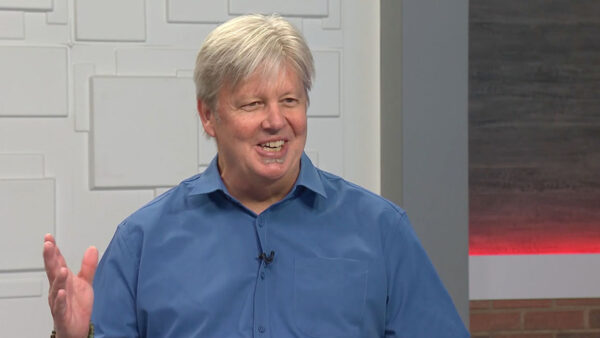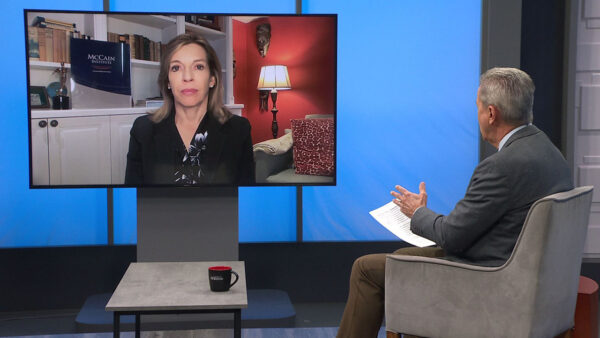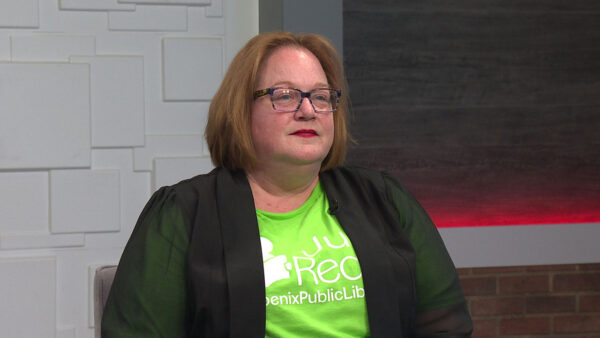Learn about the American Heart Association’s new Halle Heart Children’s Museum in Tempe. It’s billed as the only cardiovascular disease educational facility in the United States. Thousands of Arizona kids are expected to visit the museum each year, free of charge, to gain a better understanding of what causes heart disease and how to prevent it.
Ted Simons: The Halle Heart Children's Museum in Tempe is an effort by the American heart association to teach kids how to live heart healthy lives. Here to tell us more is Sarah Suggs Cheek, who helped raise money for the museum as chairman of the heart ball for the American heart association. Good to have you here. Thanks for joining us.
Sarah Suggs Cheek: my pleasure. Thank you.
Ted Simons: Education facility on cardiovascular disease. Interesting.
Sarah Suggs Cheek: Isn't that interesting? You know, when we took a look at the childhood obesity epidemic and saw the trajectory, how it affects a third of children being either overweight or tending toward obesity, it's a problem that has tremendous proportions in terms of health care cost, but quality of life issues. So every year our committee picks an issue, we adopted this one, and we just made a decision that we were going to deliver this museum on our -- to our community to our kids. It's the first in the country.
Ted Simons: Every museum, every idea starts with a germ.
Sarah Suggs Cheek: I have to commend Patricia Leach, who is the visionary for this. She's with the American heart association, and really we took 20,000 square feet and she had this vision of what should that space be, what would be its highest and best use. At the end of the day brought in a museum designer who had been the former curator of the museum of natural history for New Mexico. He also was with George Lucas, Lou Cass films, "Star Wars," universal studios, and he did the Winston Churchill museum and the challenger space center. So we had a wonderful resume to create something that's interactive for kids.
Ted Simons: Because it's got to be of interest -- how do you teach a kid about cardiovascular stuff?
Sarah Suggs Cheek: Exactly. Come on, let's go to this cardiovascular museum. What a yawn. It is absolutely an incredible place to be. And the exhibits that were designed are -- zero in specifically -- we worked with educators and we do meet action to state mandated education requirements in health, science, and physical education. We touch them beginning with the second grade and that's where we put them on a path of information to empower them so as they are on their path of life, they begin to have intrinsic and systemic information about heart healthy living, what that means.
Ted Simons: I know there are certain exhibits that just sound fascinating. One of them they actually scan food and look for the nutritional value in certain foods?
Sarah Suggs Cheek: Right. We begin with a museum called the mop, which is the muscle organ pump. We begin with the beginning. And help them understand that the heart is a muscle, how the veins and arteries work in a very interesting, clever way. They understand that. From that exhibit they eventually end up in the marketplace and we do teach them how to grocery shop. They learn to read labels and they scan their own items and they're graded on how heart smart they were.
Ted Simons: Interesting. And obviously exercise has to be a point of emphasis as well.
Sarah Suggs Cheek: Huge. The beat goes on as the cardiovascular workout. We really attack cardiovascular health from a lot of levels. And I'm pleased to say that The Phoenix suns charity gave us $100,000 grant and the suns gorilla and some of the players do big workouts on large screen and the kids work out. There's a stethoscope where they're at rest, they put the stethoscope on their heart and there are orange and purple balls in this big cylinder, so the balls barely move. They go do the workout with the suns and the gorilla via the big screen, come back, and the balls are going crazy like popcorn. So they understand the level of activity they need to get their heart going.
Ted Simons: What kind of age group are you targeting for? How young and how old?
Sarah Suggs Cheek: Second grade and fifth grade. Actually educators who worked with us told us those are sweet spots of learning. Once they're in high school sometimes they kind of know everything already, so we begin as I said with second grade, and then bring them back again at the fifth grade, and then we actually have different tour scripts and our docents are trained depending on the grade level we customize it.
Ted Simons: What kind of reaction are you getting, both from kids,but from parents and teachers and the whole nine yards?
Sarah Suggs Cheek: Well, we are just about to commence the tours, and the field trips have been in the queue waiting for this. As soon as this actually just started in January after the winter break, they are so excited. The kids -- it's visually impactful, the colors, the exhibits, so the educators have been chomping at the bit for us to get this open.
Ted Simons: And did they -- how much say did they have? Was there some sort of advice? Who did you work with?
Sarah Suggs Cheek: We had focus groups with educators, cardiologists, the American heart association certainly has vaults of information on the childhood obesity epidemic. But at the end of the day we needed to impact their lives and have these kids walk away feeling, wow, I am not going to be -- I'm not going to smoke. Boy, am I going to exercise and I want to eat healthy.
Ted Simons: It brings to mind maybe an odd question, what happens if you got a kid, second, fifth grade, whatever, who is overweight? How did you make sure that kid knows we need to work on this as opposed to, you're something -- kids are very sensitive about stuff like this, how do you approach that in a museum?
Sarah Suggs Cheek: The scripting is done very carefully, so that we don't embarrass anyone or make anyone feel inadequate. Our goal is to empower them, enlighten them, educate them. When they are -- sometimes they don't have that information. They don't even know that they need to exercise or, gee, a certain junk food for breakfast is not a good idea, or what that can mean over the course of time. The other thing S. we will have family days, so our hope is that this kind of goes viral, if you will, the kids go home, they take things home in their backpack, look what I learned today, and so -- and we give them a cookbook, a heart healthy cookbook and some of these things that they can take home and apply in their own environments. And hopefully they'll come back with their parents and family on a family day.
Ted Simons: So group tours are OK?
Sarah Suggs Cheek: M-hmm.
Ted Simons: We got free admission?
Sarah Suggs Cheek: Free. Absolutely. That's part of the heart ball goal. 30,000, we estimate, out of the gate. Perhaps higher than that, and then about 15,000 adults year one.
Ted Simons: And you help if a school district is out there, far away from town or can't quite afford the transportation, something along those lines, there's a way to help there too?
Sarah Suggs Cheek: We have volunteers here to make it happen. So we have transportation, there's -- basically we just don't want any reason to not get the kids in the museum.
Ted Simons: It sounds fascinating, and to see those kids learning something, and having fun has to be a hoot.
Sarah Suggs Cheek: We're very proud. We're the first in the country, and the CEO of the American Heart Association came, when we ribbon cut, so we're thrilled.
Ted Simons: Sarah, thank you so much for joining us.
Sarah Suggs Cheek: My pleasure. Thank you so much for your interest.
Sarah Suggs Cheek:American Heart Association;























